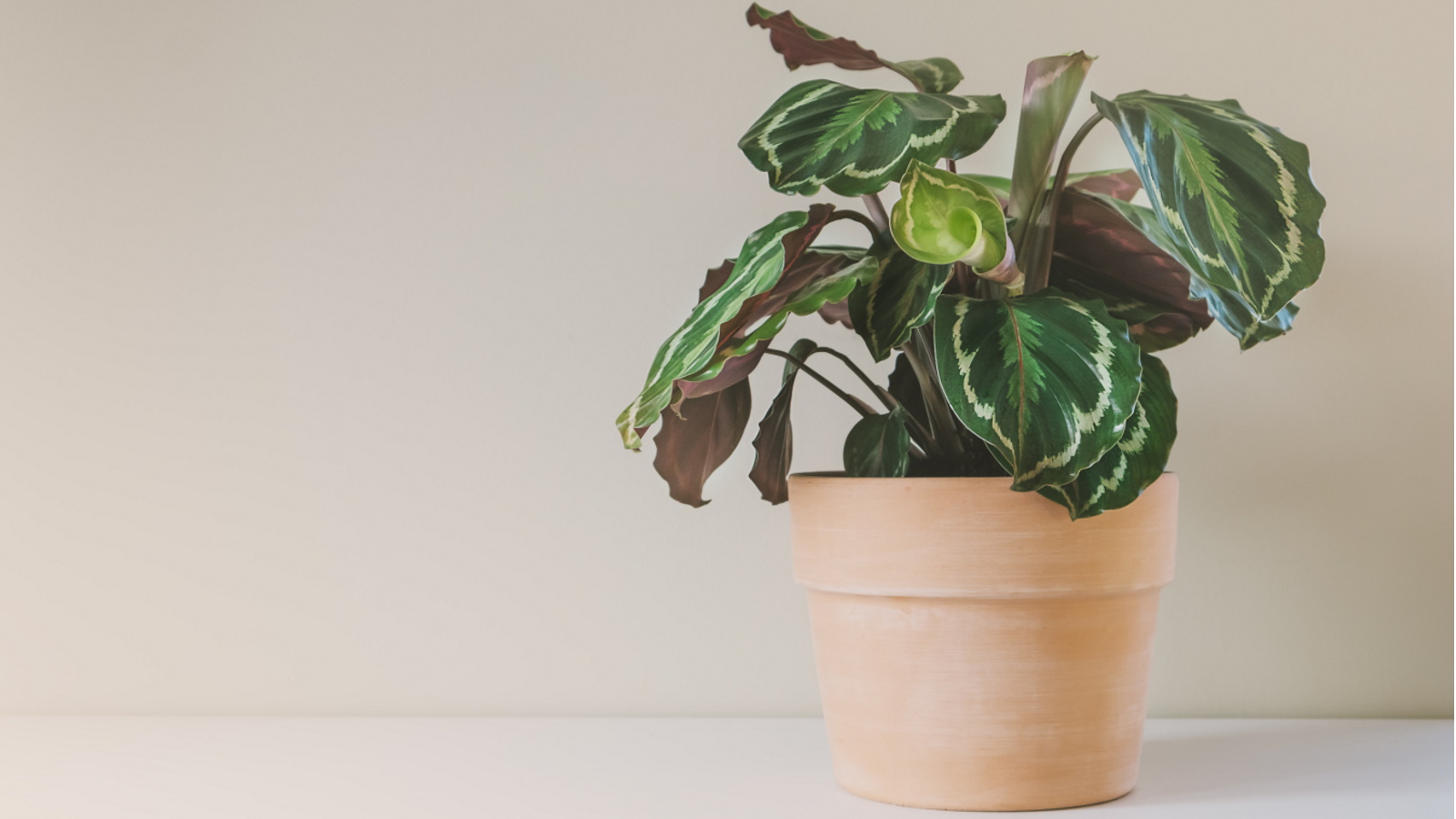
A calathea might not be the best indoor plant to consider if you're after an easy houseplant, or something low-maintenance, as they're known for their fussy nature. They love to scream for attention, so doting plant parents will have no problem keeping them happy.
They're commonly known as prayer plants due to the way their beautiful patterned leaves move from an upright position at night to an open one during the day as lighting changes, resembling the movement of praying hands.
Their leaves make them an attractive addition to any houseplant collection, with so many varieties offering varying colors and patterns. For example, a rattlesnake calathea (Goeppertia lancifolia) has a rigid leaf shape with a deep green oval pattern, while pin-stripe calathea (Goeppertia ornata) offers large oval leaves with beautiful pink stripes that look painted on. Peacock plants are also a popular variety of calathea.
The funky foliage of calatheas and their fast-growing nature is what makes most houseplant lovers forgive their needy nature. We've gathered some expert advice for keeping calatheas happy so that you can maintain their striking look.
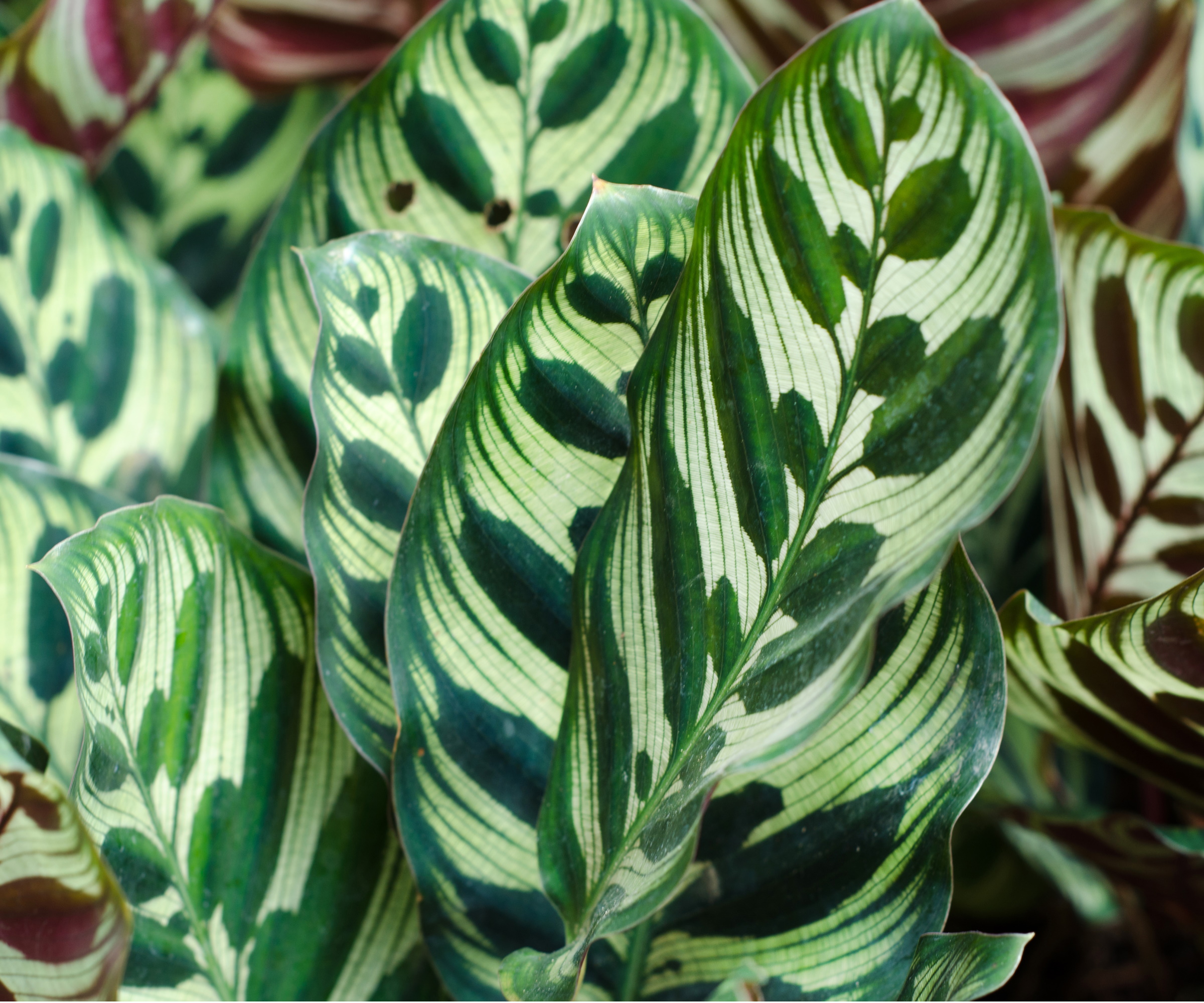
5 expert tips to help you care for calatheas
Known to not be the easiest plant to care for but packed with stunning foliage, calatheas are a challenge worth taking on. We've spoken to experts to find out the best ways to keep your prayer plant happy.
1. Avoid direct sunlight
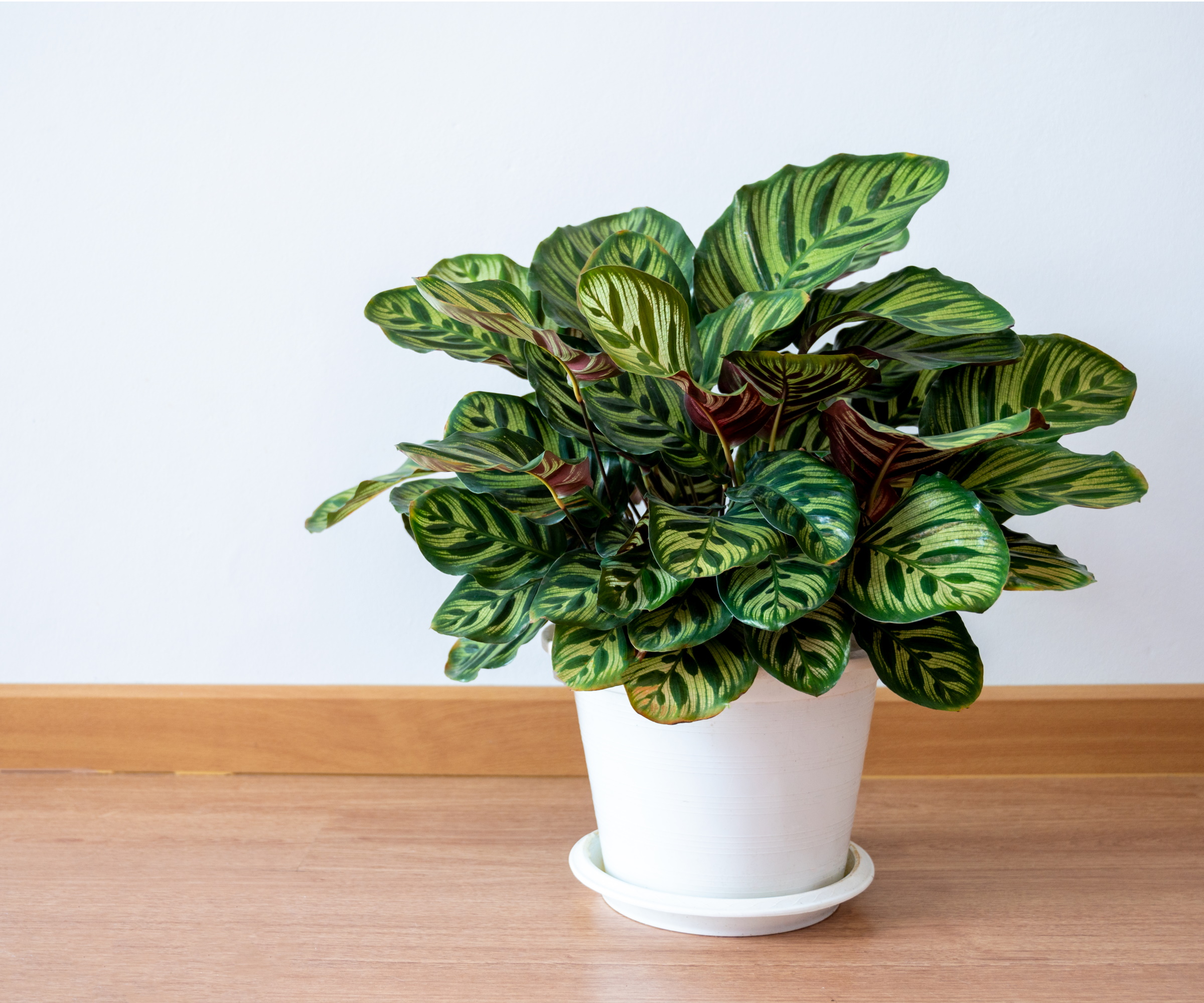
If there's one thing every calathea owner is aware of, it's that the attractive leaves like to throw a tantrum when they can. That's why it's important to get the lighting right for these plants.
'Calatheas prefer a minimum of medium indirect light. They are native to tropical South and Central America and grow on the forest floor, under the lush tree canopy. Direct sunlight can cause leaf tip necrosis and bleached areas on the leaf,' says Vladan Nikolic from Mr. Houseplant.
In their natural habitat, calatheas are partially shaded by trees. Allowing them to sit in direct sunlight in your home can lead to leaves quickly scorching and turning brown.
'On the other hand, low light can cause pale leaves and loss of color,' Vladan adds.
The easiest thing to do is find a bright spot with indirect light and trial if your calathea is happy. If the foliage continues to thrive, leave it where it is and your calathea won't complain.
2. Get water levels just right
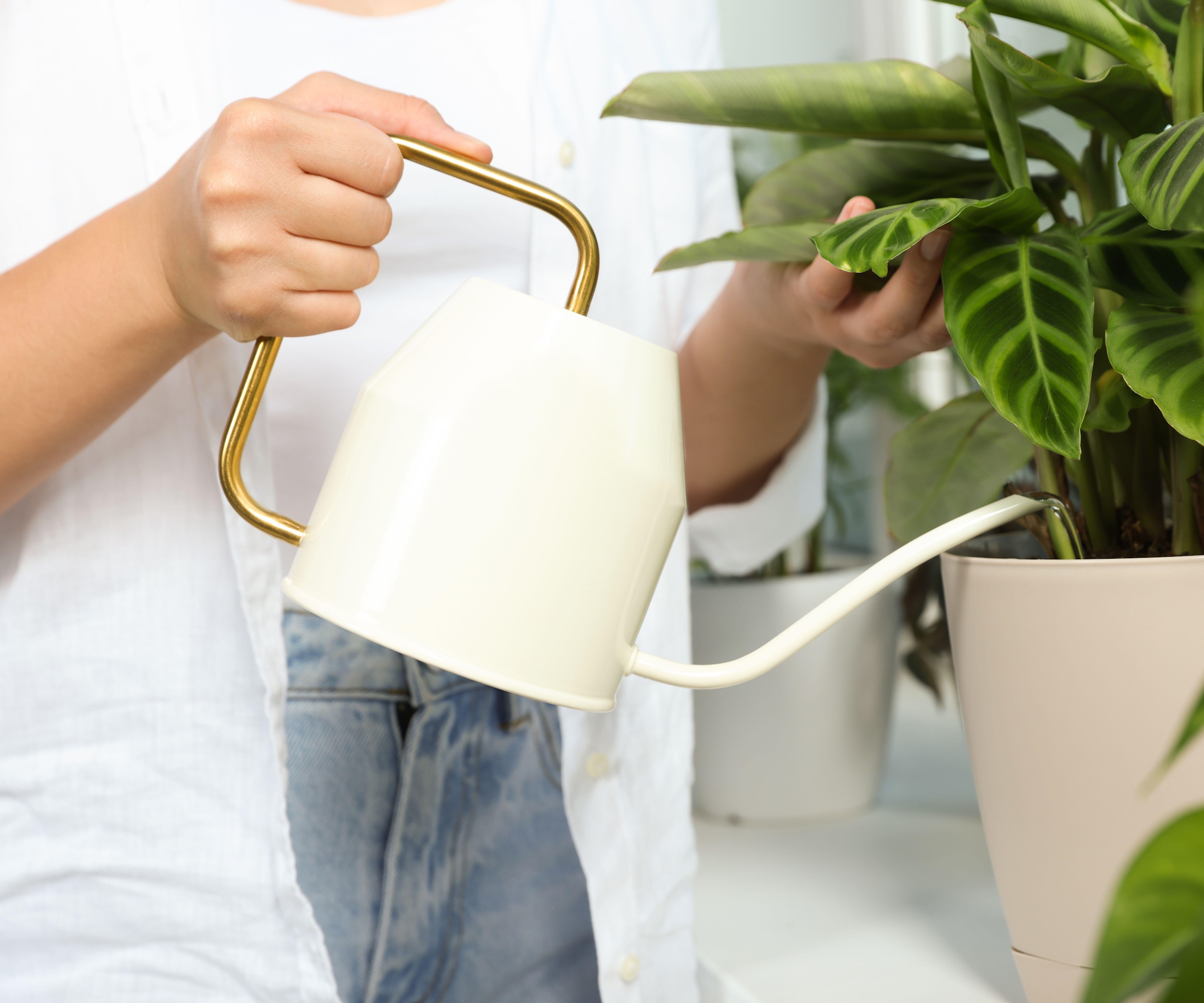
You may find your calathea is still looking worse for wear even in a bright spot if you aren't watering it correctly. But don't fear - these plants love to be dramatic and will perk right up again once they've had a drink.
'Water when the soil is halfway dry. If you are unsure if they are ready to be watered, a moisture meter can help. They will also let you know they are thirsty by drooping or curling their leaves,' says Ashley Anita, houseplant expert and influencer.
'Regular top watering is fine, but bottom watering is preferential as this enables the plant to absorb as much water as it needs,' she adds.
Calatheas are prone to being overwatered and will usually indicate this by curling their leaves. Monitoring moisture levels, like with this moisture meter from Amazon, is key to keeping them happy. They like to have consistent moisture without becoming waterlogged.
3. Place them near other plants

Placing houseplants together is a great way to decorate with plants and create an impactful green display in your home, but it also provides benefits to indoor plants.
Pairing plants with similar care requirements can make it easier to keep moisture and lighting at an optimal level. It also helps to increase humidity between the plants, so it's a great technique for tropical indoor plants.
'Since calatheas are tropical plants that don’t like direct light, you can pair them with other tropical plants that like indirect light. Boston Fern would be a great companion, as well as philodendron birkin and fittonia,' says Vladan.
It's recommended to also regularly mist calathea foliage to help with humidity. You can give it a daily misting using something like this mister from The Home Depot.
4. Keep them warm
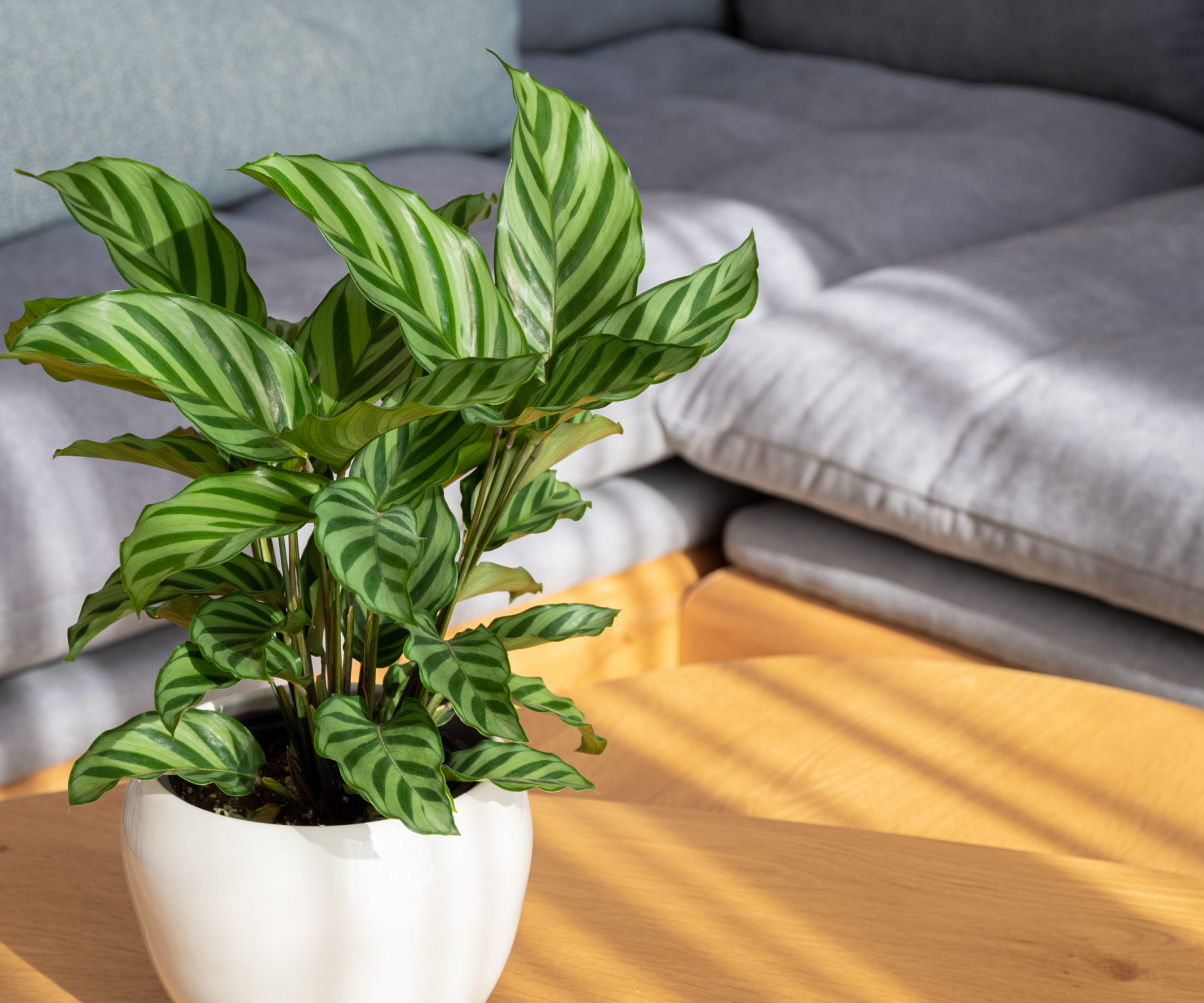
As tropical plants, calatheas don't like dropping temperatures and will show signs of cold damage if they aren't warm enough.
'Calatheas thrive in moderate temperatures from 70-80°F with higher humidity. Be sure to avoid hot, bright windows,' says Ara Flink, a plant expert at Propagation Diaries.
A room temperature below 55°F could quickly damage prayer plants and they're quite difficult to bring back from damage.
Grouping them with other plants will not only increase humidity but also help keep them warm.
5. Fertilize while they're growing
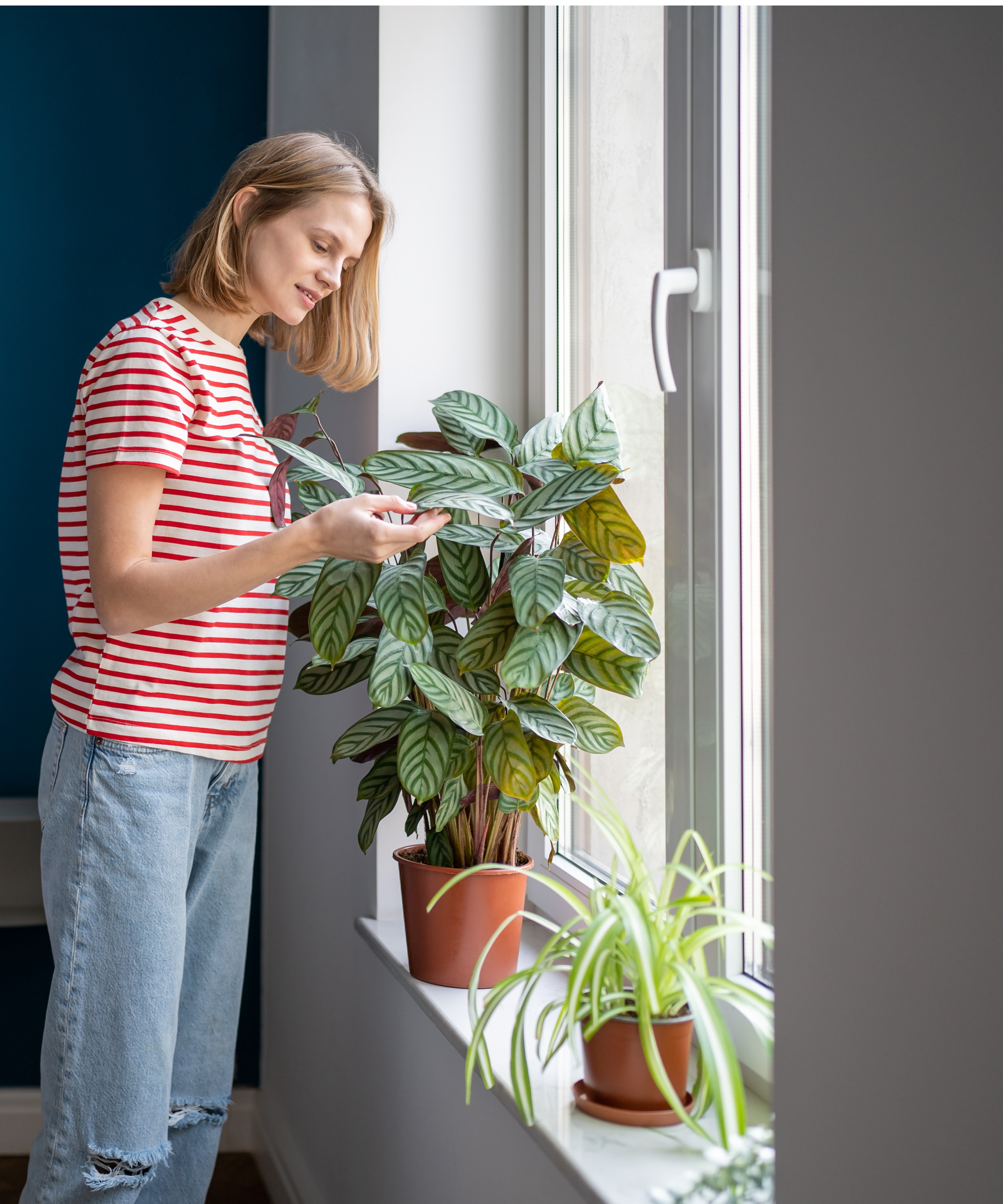
It's always exciting when you see new growth on houseplants. Calathea leaves will shoot upright out of soil before unravelling to reveal their gorgeous patterns. To help promote healthy growth, you can choose to fertilize calatheas.
'You can fertilize a calathea once a month with a nitrogen-rich liquid fertilizer when it is actively growing. In winter, when the plant is not growing actively, don’t fertilize it,' says Vladan Nikolic.
'Follow the instructions on the package to avoid overfertilizing, as it can damage the plant’s roots. Flush the soil with distilled water periodically to flush away any salt or mineral buildup which can damage the root system.' he adds.
There are lots of fertilizers on the market for specific plants, but you can get all-purpose ones like this indoor plant food from Perfect Plants.
Shop calatheas online
These plants show off a striking dark green pattern on the tops of their leaves, with shades of burgundy or pink on the bottoms.
Calathea Maranta features leaves with a striking green and yellow pattern, and red hues underneath foliage.
This Calathea Pinstripe stands out with its dark green leaves painted with thin pink stripes.
FAQs
Why is my calathea crisping up?
Calatheas are quick to tell you when something is wrong. They will have a dramatic reaction to not being watered enough or receiving insufficient lighting. If you notice your calathea's leaves are turning brown and crispy, it's likely it is not happy with humidity levels or has been scorched by direct sunlight. Take care to position it in bright, indirect light and give it a daily misting to prevent foliage from going crisp.
How do you keep calathea leaves bright?
The beautiful patterned and multi-colored leaves of prayer plants is what makes them so attractive to houseplant lovers. They're tricky to keep satisfied and will show signs of being unhappy through changes to their foliage.
'Keep the coloring of the leaves bright by providing correct lighting. Too bright of light can cause burn or bleaching of the leaves. Using houseplant fertilizer or a foliar spray with fertilizer every month will also help keep leaves green and colorful,' says Ara Flink, a plant expert from Propagation Diaries.
How do you propagate calatheas?
The best method to propagate calathea plants is division, as they cannot be propagated through cuttings.
'Begin by selecting a mature, healthy plant with multiple stems. Water the plant a day or two before propagation, then gently remove it from the pot. Identify natural divisions in the root system and separate these sections, ensuring each has roots attached,' says Ashley Anita, houseplant expert and influencer.
'Then plant each section in its own pot with fresh, well-draining soil. Water thoroughly, provide bright, indirect light, and monitor the new plants for signs of growth,' she adds.
Tricky but rewarding, calathea plants require some dedicated care to keep them happy. However, provide optimal conditions and you will be rewarded with thriving, striking foliage that can add a tropical feel to you home. Other jungle-feel plants that will pair nicely with calatheas include monsteras and kentia palms.







